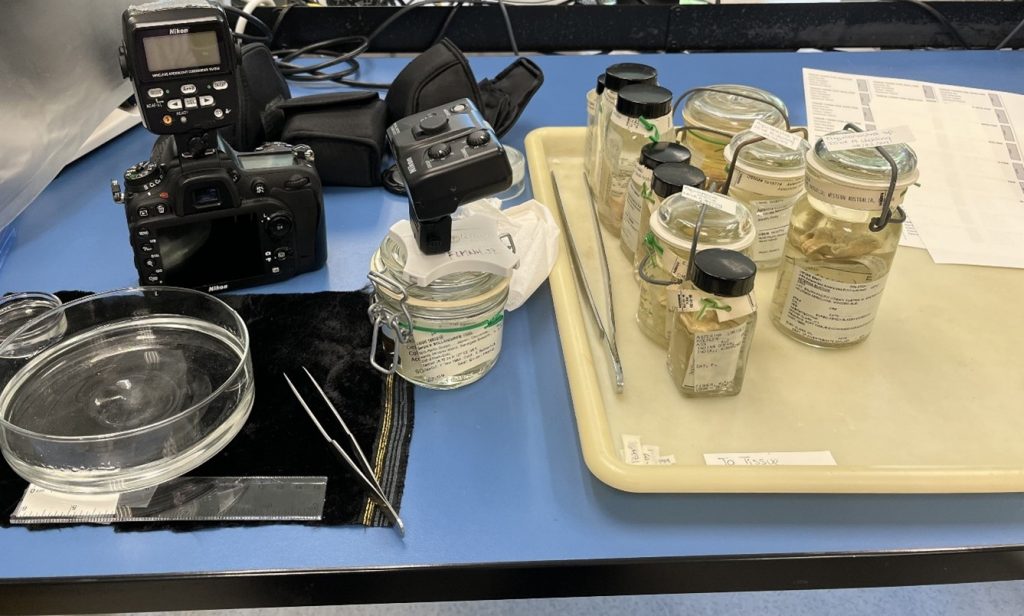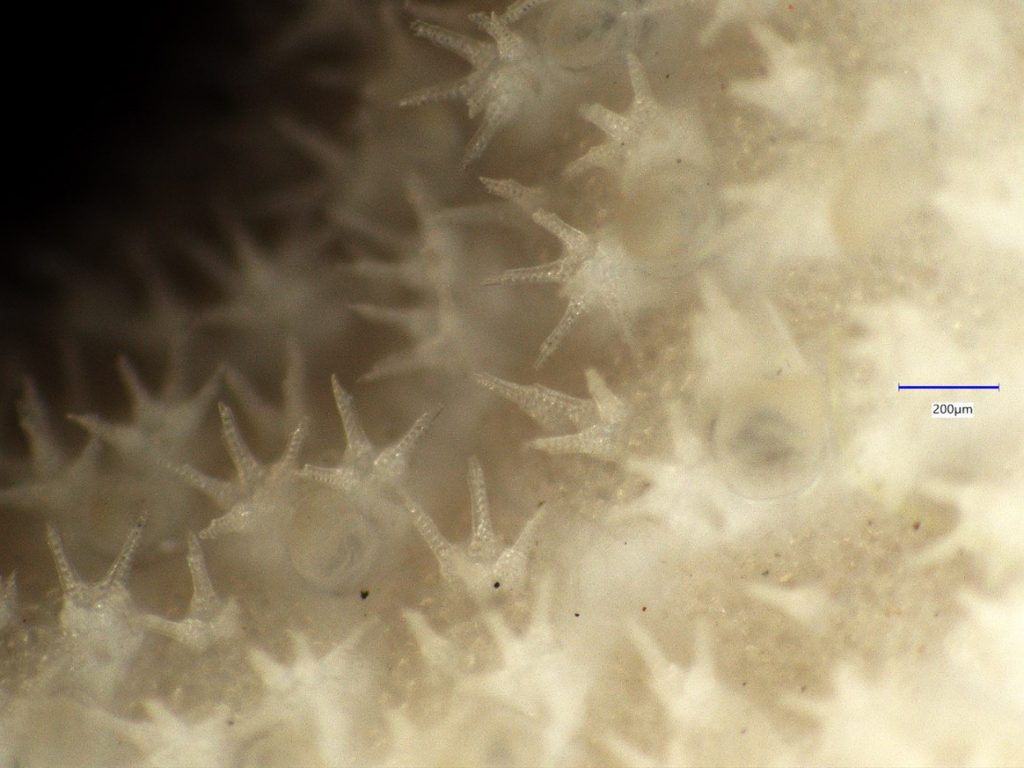This summer the Florida Museum Travel Award gave me the opportunity to visit the Invertebrate Zoology Department at the Smithsonian Museum of Natural History, where I was excited to visit the sea star collection. During my visit here, I was largely focused on sampling the genus Aquilonastra, which is one of the most diverse and abundant genera of tropical sea stars. It is found extensively on hard bottoms across the Indo-West-Pacific from the intertidal to 35+ meters. Given the diversity of body plans as well as range of life history traits among this group, Aquilonastra is an ideal model for understanding patterns of diversity and trait evolution across the Indo West Pacific region. The most recent revisions of Aquilonastra have described 32 species, and given the cryptic morphology of this group, it is likely that there are many more undescribed species.
In addition to their incredible diversity, Aquilonastra have some unique life history strategies. Multiple species of Aquilonastra have evolved a unique strategy of asexual reproduction via fissiparity, or fission of arms. Individuals that have gone through fission are often noticeable because they have unequal arm lengths, and are much smaller than normal 5-rayed sea stars. We do not have a great understanding of why fissiparity is a popular strategy in this group, but I am hoping to gain more insight through my research.
During my trip I was able to photograph and sample from the Smithsonian’s diverse Aquilonastra collection. I sampled species that I do not currently have access to, as well as Aquilonastra from new localities. Species in this genus can often be very difficult to identify because morphology is largely based on small spine-like structures on the surface of plates termed “spinelets”. Spinelets have a wide range of patterns and numbers across plates, and need to be carefully examined for proper identification. For each specimen, I took many close-up photos of spinelets, along with other distinguishing features. These are unique and beautiful structures to look at up-close, so I was particularly happy to observe spinelets in species I had not seen before. I also sampled some tube-feet from specimens which will be used for molecular analysis. These photos and tissues will help me improve identifications for this challenging group. Moving forward, I am hoping to build a better molecular phylogeny of Aquilonastra using some of these samples I collected during my trip.
I was also grateful for the opportunity to connect with colleagues at the Smithsonian. I received great advice on working through the challenging morphology in this group, as well as preparing for new sequencing methods. Thank you to the Florida Museum Travel Grant for supporting my visit to this collection!
Abby Uehling is a graduate student pursuing a Ph.D. through the College of Liberal Arts and Sciences, Department of Biology, advised by Dr. Gustav Paulay, Curator of Invertebrate Zoology here at the Florida Museum.
The 2024 Summer Student Travel Awards are supported by the FLMNH Department of Natural History, including funds from the Louis C. and Jane Gapenski Endowed Fellowship and the B.J. and Eve Wilder Endowment. If you would like to help support this fund for future student awards, please go to:
Louis C. and Jane Gapenski Endowed Fellowship
B.J. and Eve Wilder Endowment

